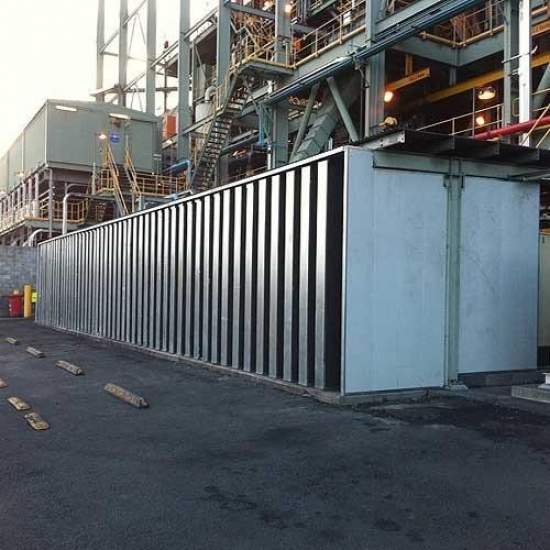In the world of acoustics and modern architecture, sound control is no longer a luxury—it is a necessity. Whether it’s a corporate office, hospital, commercial building, or residential space, controlling noise levels contributes significantly to comfort, productivity, and overall well-being. One of the most effective ways to achieve this is through the use of a sound attenuator.
A sound attenuator, also known as a silencer or duct silencer, is a critical component in HVAC (heating, ventilation, and air conditioning) systems and acoustic treatment plans. It reduces the transmission of noise through air ducts or other pathways, improving the acoustic environment of a room without compromising airflow. Let’s explore how this innovative solution can transform your space for better sound control.

Understanding What a Sound Attenuator Is
A sound attenuator is a specially designed device installed within ductwork or building walls to minimize the noise created by mechanical equipment, airflow, or external sources. Typically constructed with perforated metal, acoustic fill (such as mineral wool or fiberglass), and a casing, these attenuators absorb or deflect sound waves while allowing air to pass through freely.
They are widely used in various sectors, including:
- Office buildings
- Hospitals and healthcare facilities
- Recording studios
- Educational institutions
- Industrial plants
- Commercial spaces
The goal is simple: create a quieter and more controlled acoustic environment.
Why Sound Attenuators Matter
1. Noise Reduction at the Source
Air handling units, fans, compressors, and HVAC systems often generate high levels of noise. This can be distracting and, in some environments, detrimental to health or concentration. A sound attenuator installed in the duct system can effectively reduce the noise that travels through these systems, keeping spaces quieter and more pleasant.
2. Improved Speech Intelligibility
In environments such as classrooms, conference rooms, and auditoriums, clear communication is crucial. Excess background noise can hinder speech intelligibility. Using a sound attenuator helps eliminate unnecessary echoes and background noise, making it easier for people to understand each other.
3. Enhanced Privacy
Healthcare, legal, and corporate spaces require a degree of confidentiality. Acoustic privacy can be compromised when noise travels through vents or open spaces. A well-placed sound attenuator prevents this sound leakage, helping to protect private conversations and sensitive information.
4. Compliance with Building Codes and Acoustic Standards
Many building regulations and green certifications demand that HVAC systems meet certain acoustic performance standards. Sound attenuators help meet these requirements by reducing noise pollution and contributing to a more sustainable indoor environment.
Types of Sound Attenuators
Understanding the different types of sound attenuator options can help you choose the right one for your space:
- Rectangular Duct Attenuators: These are the most common and are designed for standard duct systems. They offer good performance for general applications.
- Circular Duct Attenuators: Ideal for round duct systems, these attenuators provide similar noise reduction but with a more compact design.
- Elbow Attenuators: These are installed at duct bends and help in reducing noise while maintaining directional air flow.
- Splitter Attenuators: These contain internal acoustic baffles or splitters that absorb sound without obstructing airflow significantly.
Each type is suited for a specific application, and the choice depends on factors like airflow requirements, noise levels, and spatial constraints.
Installation and Maintenance Considerations
Installing a sound attenuator should always be part of a well-thought-out acoustic design plan. Key considerations include:
- Location: Placement is vital. The attenuator should be close to the noise source or installed at points where noise transmission is highest.
- Size: It must be compatible with the existing duct size and airflow requirements to avoid pressure drops.
- Material: High-quality acoustic materials improve durability and sound-absorbing efficiency.
- Maintenance: A well-designed attenuator requires minimal upkeep, but regular inspection ensures long-term performance.
It’s also important to engage with professional acoustic consultants or engineers who can perform acoustic measurements, simulations, and recommend the right configuration for optimal results.
Real-World Applications and Benefits
Let’s look at how different sectors benefit from the installation of sound attenuators:
- Hospitals: In medical environments, peace and quiet are crucial for patient recovery and staff concentration. Sound attenuators reduce HVAC noise and create a healing acoustic atmosphere.
- Studios and Media Rooms: In recording and broadcasting environments, clean sound is everything. Attenuators ensure that mechanical systems do not interfere with sensitive audio recording.
- Corporate Offices: Open-plan offices often suffer from high ambient noise. Attenuators help create focused work zones by eliminating mechanical background noise.
- Hotels and Hospitality: Guest comfort depends heavily on a quiet atmosphere. HVAC noise can disrupt sleep, so hotels often use attenuators to maintain a peaceful environment.
Conclusion: Why Trust Perfect Acoustics?
For those seeking reliable, efficient, and expertly designed sound attenuator solutions, Perfect Acoustics is a name you can trust. Known for their deep expertise in acoustic engineering and attention to detail, Perfect Acoustics delivers high-performance attenuation systems tailored to your specific needs. Whether you’re designing a serene office, a quiet hospital wing, or an immersive media room, Perfect Acoustics ensures your space is not only functional but acoustically flawless.


